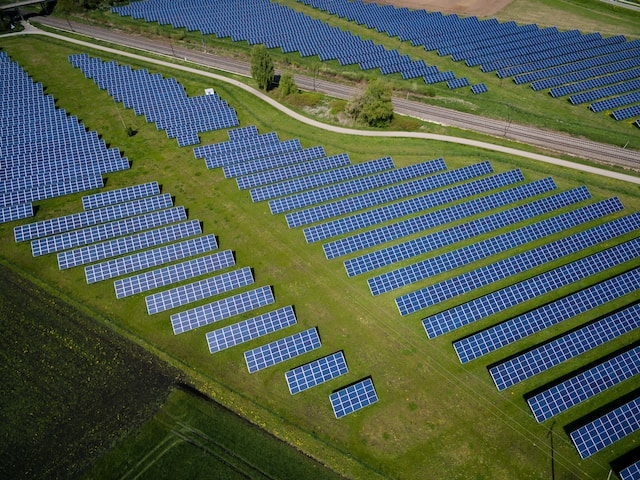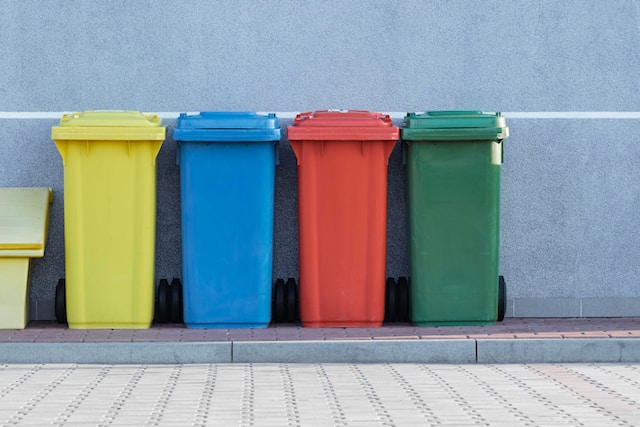Over half of the world’s population lives in cities, and this is set to increase.
Rapid urbanisation presents numerous environmental, economic and social challenges that policymakers are urgently trying to address.
IoT technology has become instrumental in developing sustainable smart cities that are safe and productive to live in.
Connected sensors and advanced data analytics are reducing pollution, saving water and optimising electricity and waste management.
This article will discuss the role of IoT in developing sustainable smart cities, and how it’s already been successful.
IoT and smart cities

Modern cities are highly complex, combining private and public infrastructure services and utilities across multiple sectors and industries.
IoT technology has been cited as an enabler of sustainable development by policymakers at the EU Commission, UN and World Economic Forum’s IoT for Sustainable Development Project.
Smart cities are not a new concept, but cheaper, more accurate IoT sensors and fast, reliable 5G networks are accelerating their evolution. The number of smart devices installed in the world’s cities is approximately 50 million and is expected to exceed 75 million by 2025.
By collecting data from infrastructure and utilities and making it available for real-time analytics and decision-making, IoT is transforming urban sustainability.
Key applications
IoT’s uses and applications are developing all the time, but have proven success in enabling and supporting the following smart city initiatives:
- Traffic management: IoT devices like cameras and sensors monitor real-time traffic data, enhancing the management of traffic flow and reducing congestion. Smart traffic lights and adaptive signal control systems adjust to traffic scenarios in real time.
- Transportation: IoT optimises public transport by monitoring vehicle locations, predicting arrival times, and adjusting schedules. Sensors can provide data on parking spaces and available electric charging points.
- Waste management: IoT-enabled waste bins and collection trucks monitor waste levels, optimising collection routes and schedules. This reduces congestion and accelerates the recycling process.
- Energy management: Smart grids use IoT devices to monitor energy consumption and adjust to fluctuating demand. Smart buildings can optimise energy usage through automated heating, ventilation, and air conditioning (HVAC) systems.
- Water Management: IoT plays a crucial role in monitoring urban water consumption and usage.
- Environmental monitoring: IoT sensors can monitor air quality and noise pollution, providing real-time data to systems, city officials and residents.
Let’s take a closer look at IoT’s role in building smarter, more efficient cities.
Energy management

Cities consume around 78% of the world’s power.
IoT technologies are reducing unnecessary electricity consumption, reducing peak demand, and optimising the use of renewables.
For example, smart grids use IoT devices to monitor and control energy distribution, enabling real-time adjustments to supply and demand.
Case study: The UAE
Hubgrade 4.0, an energy management hub created by Enova by Veolia, collects real-time data from urban infrastructure.
The hub collects data from over 26,000 points.
A study published in 2022 found the system saved 254 million kW of electricity, water savings of around 3 million cubic metres, and financial savings of about 138 million AED in five years since its implementation.
Water management
Cities rely on vast quantities of fresh water. Yet, 1 in 4 urban residents worldwide is still unable to access clean water, according to the UN.
Water is wasted through inefficient usage (e.g. irrigating green spaces when not required) or leaks. For instance, leaks cost England and Wales some 3.3 billion litres of water daily.
IoT technology enables real-time leak alerts and optimises water services, such as wastewater, public fountains and irrigation.
Saving water cuts costs and allows cities to address infrastructural weaknesses.
Case study: Barcelona
In Barcelona, Spain, IoT-based water management systems have been highly successful in reducing wastage.
Sensors measure and control park irrigation and public fountains, resulting in $58m in savings since their implementation.
Barcelona has showcased how cities can cultivate IoT innovation by developing a private 5G network and constructing the 22@ industrial district, now home to many pioneering IoT and tech startups.
Waste management

IoT technologies revolutionise waste management by optimising collection routes, reducing fuel consumption, and improving recycling rates.
For example, underground waste management moves waste off the street entirely, using tubes to direct waste into recycling centres.
Smart waste bins equipped with sensors can alert authorities when they’re full and require collection, reducing inefficient journeys.
Case study: South Korea
In South Korea, the city of Songdo has implemented an IoT-based waste management system that uses pneumatic tubes to transport waste directly from households to processing facilities.
This system has reduced truck traffic and lowered greenhouse gas emissions. An underground waste management system was trialled in northwest Cambridge, UK, replacing around 900 wheelie bins.
As of 2022, Songdo has obtained a world-leading recycling rate of around 78%.
Transportation and mobility
IoT technologies modernise urban transportation by streamlining public transport services and reducing traffic congestion.
IoT traffic management is forecast to save cities $277bn by 2025.
Moreover, sensors can transmit information on parking spaces and electric vehicle (EV) charging points, keeping people informed about their availability.
Real-time data from connected vehicles, public transport, and infrastructure help cities develop smarter traffic management systems.
Case study: Singapore
The Singaporean government was among the first to develop a smart traffic management system that uses IoT sensors to monitor and manage traffic flow, reducing congestion and improving overall mobility.
They reported reduced congestion and accidents and an uptick in public transport use.
Environmental monitoring and public safety

Managing pollution and public safety is vital to creating sustainable urban environments.
IoT devices assist by monitoring air quality, noise levels, and other environmental factors.
Additionally, IoT can enhance public safety by supporting effective surveillance, emergency response, and disaster management.
Case study: Chicago
In Chicago, the collaborative Array of Things project used IoT sensors to collect and analyse environmental data from around the city.
The project received $3.1 million in grant funding to install 500 sensors across the city covering temperature, barometric pressure, carbon monoxide, light and ambient sound.
Data collected for the project is publicly available. You can find it on GitHub.
Summary
IoT is driving improvements in urban sustainability.
Policymakers and governments worldwide are investing in the future of cities by automating energy management, water management, transportation, environmental monitoring and waste management.
The cities of the future will likely combine IoT with real-time decision-making to boost sustainability and create a safer place to live.










